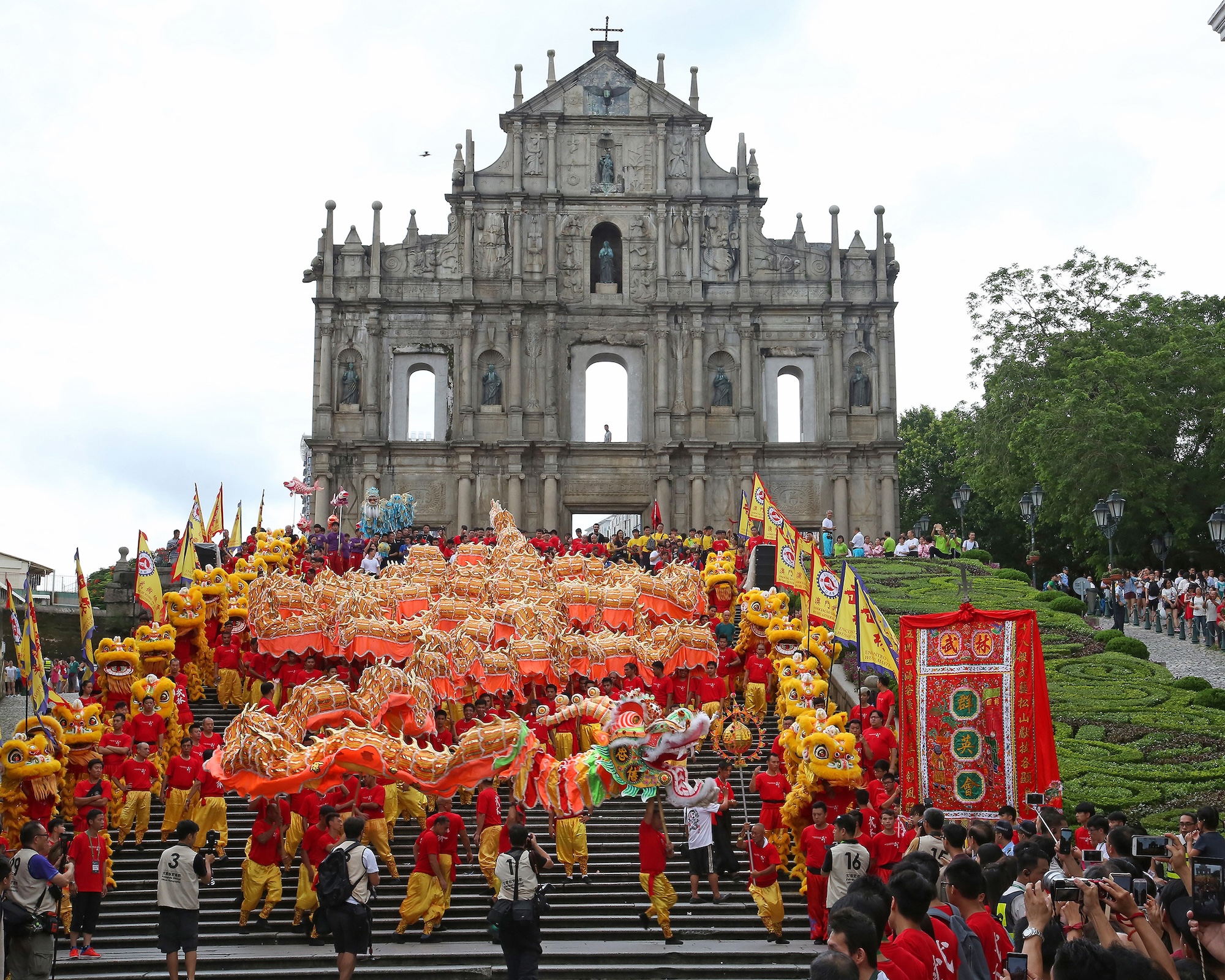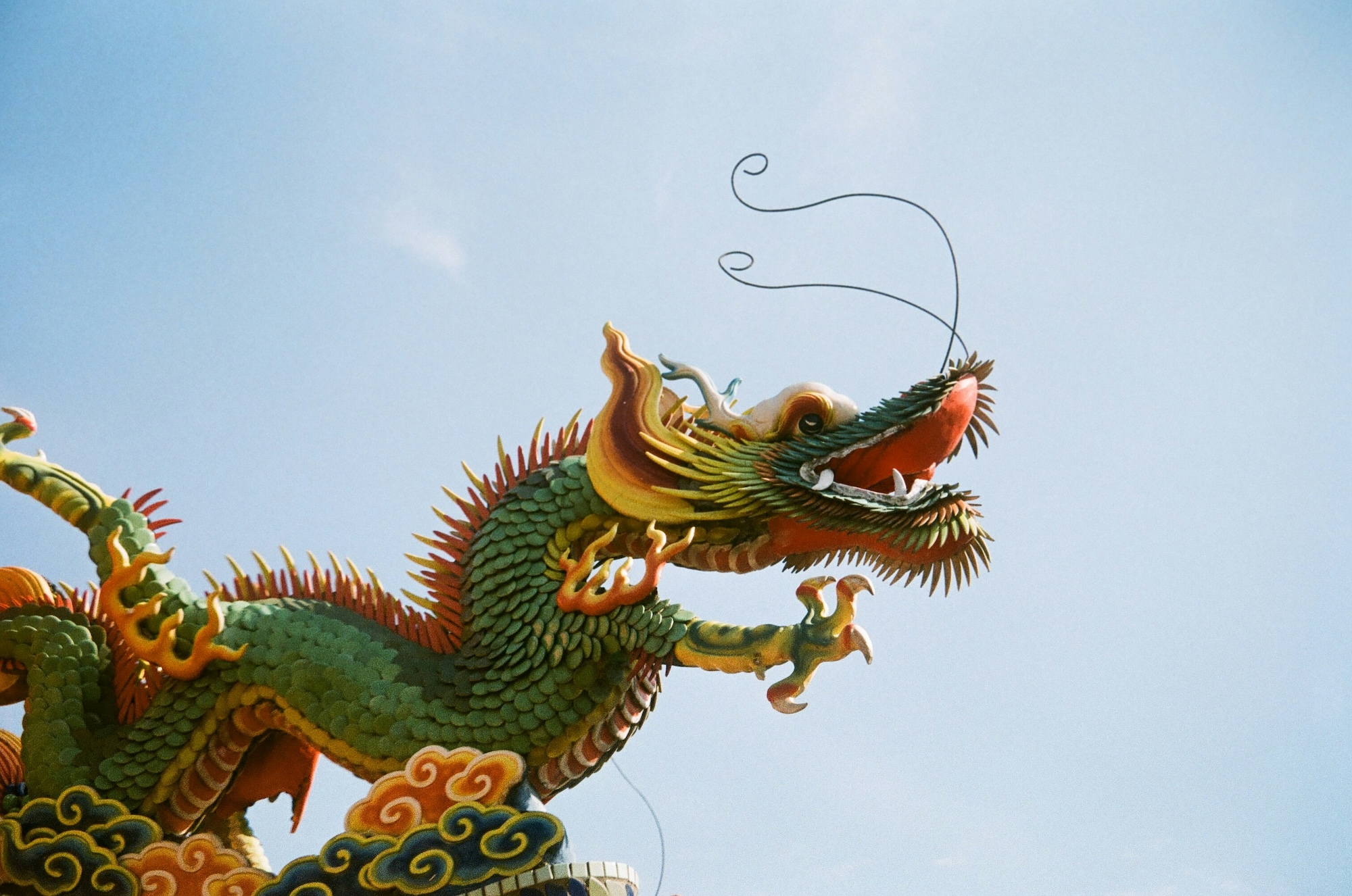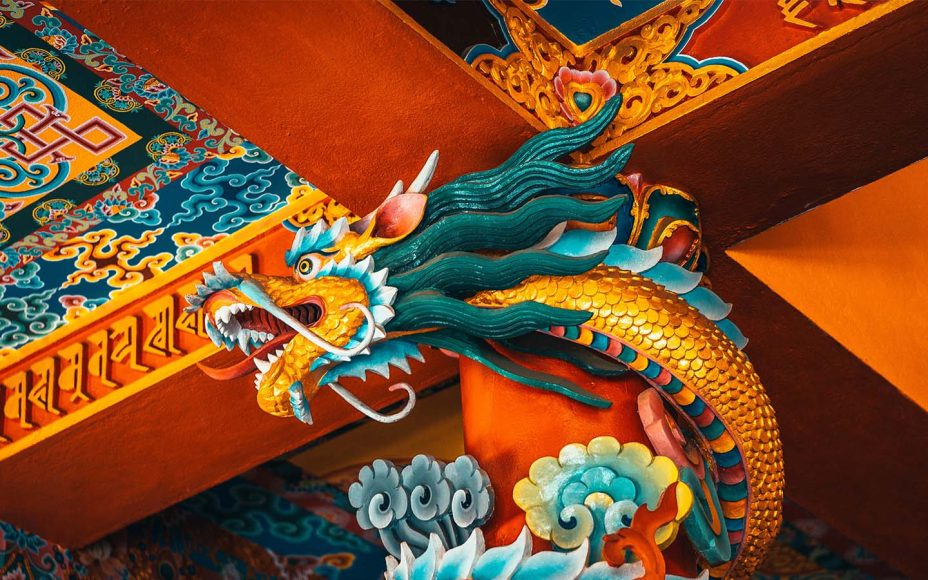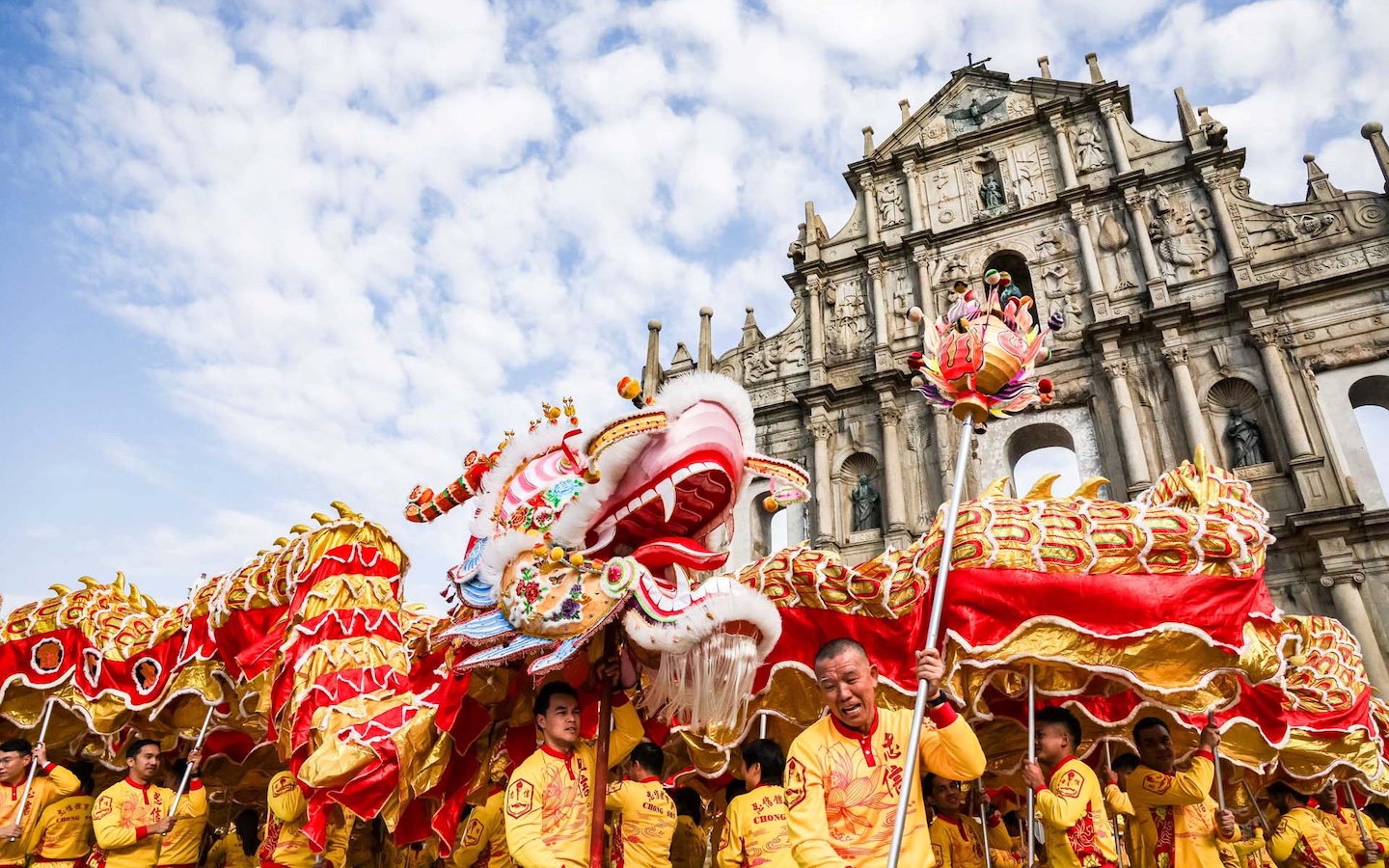Dragons may be mythological, but they hold important significance to the Chinese – and the impact of these scaley, serpentine phenomena is far-reaching. Understanding Chinese dragons undoubtedly brings a person one step closer to understanding traditional Chinese culture.
In China, dragon imagery is everywhere. You’ll see the fantastical creatures in movies, incorporated into architectural designs, on banknotes, in sports teams’ logos, in people’s homes and more. Dragon tattoos are also popular. All this is because dragons represent an assortment of mostly auspicious things: power, good fortune and protection.
Not your typical European dragon

It’s worth noting that the Chinese dragon, or 龍 (lóng), is very different from its European counterpart. The latter are often depicted as bad-tempered, fire-breathing monsters – it’s no surprise that slaying them is considered a heroic deed in European folklore. Most Chinese dragons, on the other hand, are believed to be wise and benevolent. They typically breathe clouds, not flames.
The two different ‘species’ of dragon have contrasting personas, but also quite different anatomies. Chinese dragons have been described as having camel-like heads, the body of a snake and four tigerish paws. Their faces are whiskery, and horns often poke out from the tops of their colourful heads. While these dragons’ wild eyes do get described as fierce-looking, the fabled beasts are seldom portrayed as vengeful or cruel. European dragons, on the other hand, are thought of as winged and reptilian – like fierce, flying dinosaurs sowing chaos wherever they go. Chinese dragons fly, too, incidentally, but don’t appear to need wings to do so.
No one knows exactly when the legends about dragons originated, but their imagery dates back to at least 3000 BCE. According to one theory, the legendary Chinese dragon evolved out of ancient totem-worship. Ancient people may have created the ideas of dragons by combining the attributes of several creatures, the likes of tigers, snakes, eagles and carp – accounting for their otherworldly appearance.
A theory posits that emperor Fu Xi, a legendary Chinese leader from predynastic times, was a sacred being with a serpent’s body. Hence the dragon totem in ancient China is believed to have originated from Fu Xi. In Chinese mythology, Fu Xi is considered mankind’s first male ancestor and is credited with the invention of writing, fishing and domestication of animals.
As time progressed, many Chinese came to believe that Fu Xi was one of their ancestors, which by extension meant that they were also descended from dragons.
Dragons’ roles in Chinese culture

During Chinese New Year, a festive dragon dance kicks off most celebrations. ‘Dancing’ dragons are really giant, tubular puppets manipulated by puppeteers holding poles on the ground. They are a plea to the dragon gods for a prosperous new business year.
In the olden days, Chinese farmers asked the dragon gods for a bountiful harvest. Their dragon dances were to encourage a downpour from the heavens. Some people also believed dragons could protect their lands and harvests from flood damage.
The Dragon Boat Festival, celebrated across Greater China in late spring or early summer, is another embodiment of the mythological creatures’ importance in Chinese culture. Narrow, dragon-shaped boats (often decorated with dragon motifs for luck) are raced through waterways – typically accompanied by loud drumming. This amalgamation of old traditions and festivals occurs on the fifth day of the fifth month of the Chinese calendar, and is said to ward off evil spirits.
The Dragon Boat Festival’s origins are murky, dating back millenia. But it is closely associated with the patriotic poet and government minister Qu Yuan, born in 340 BC. Qu Yuan drowned himself in a river as an act of protest against political corruption. Local villagers raced their dragon boats out into the river to search for his body, in an attempt to save him – an act that became tradition. Many people believe the dragon boat racing began even before Qu Yuan’s time, however.
What do Chinese dragons symbolise?
In China, dragons are seen as powerful, protective figures. They lean towards old-fashioned definitions of masculinity, and a strong, wise man in traditional Chinese society could be considered a physical manifestation of the mythical dragon.
Both male and female dragon iterations exist in Chinese folklore, however. Males have more to do with the skies; they’re able to soar into the heavens and bring rain. Females control earthly waters like rivers, lakes, seas and wells. With their strong connection to water, dragons are said to wield influence over seasons and harvests.
Dragon imagery is often printed or engraved on sentimental or valuable objects. People believe these auspicious items will bring good fortune and luck to their homes and businesses.
According to Chinese astrology, those born in the Year of the Dragon will be prosperous and charismatic, strong-willed and decisive. They tend to be confident leaders and successful business people. Some couples deliberately try to give birth in dragon years, which come around every 12 years, to encourage these traits in their children. The last dragon year was 2012, meaning 2024 is also a dragon year.
The symbolism behind a dragon’s colours

Blue and green: Dragons these colours are associated with nature, health and tranquillity. They can also symbolise healing and rest.
White: In Chinese culture, white symbolises purity, just like in the West. But white dragons can be associated with death and mourning, so some people view them as bad omens.
Red: Red is the colour of good fortune and prosperity. For this reason, red dragons are popular at weddings and other celebrations to encourage luck and happiness.
Yellow: Another colour representing good fortune, but also power. Yellow dragons are the most revered, and the ancient Chinese saw them as a symbol of the empire. They have more general connotations of warmth, wisdom and wealth.
Black: Black dragons do not have the positive associations of their peers, and are often linked to catastrophes such as storms and floods. They are associated with vengeance.
Different types of Chinese dragon

The Dragon King or Dragon God is considered the most powerful of all dragons. He can appear in a variety of shapes and is, in fact, often depicted as human. He is thought to reign over the seas of China in all four directions (east, west, north, and south).
The blue Spiritual Dragon controls both the rain and the winds. His job is to ensure that humans benefit from these two elements.
The Horned Dragon is one of the most powerful dragons in the Chinese tradition. Sometimes depicted as having evil tendencies, the horned dragon is also associated with precipitation.
The Winged Dragon also symbolises rain and, at times, floods.
The Celestial Dragon resides in the sky, where it prevents the gods from falling to earth.
The sea-dwelling Coiling Dragon controls time. While most dragons possess the ability to ascend to the sky, the coiling dragon is restricted to water.
The Treasure Dragon protects the likes of precious metals, money and wealth.
The Underworld Dragon controls rivers, streams, and seas. Some believe it’s the feminine version of the spiritual dragon and for this reason, the two can copulate.
As the Macao Special Administrative Region celebrates its 25th anniversary in the Year of the Dragon, we are reminded of the profound significance of the dragon in Chinese culture – a symbol of auspicious power, prosperity and protection.



